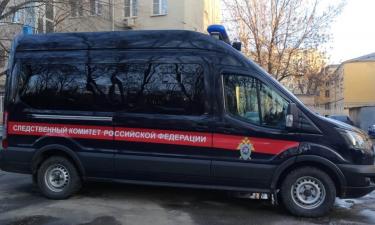60th anniversary of the Kursk Battle
The Kursk region is celebrating the 60th anniversary of the Battle of Kursk. The highlight of the celebration falls on August 21 and 22 and will be accompanied by the laying of wreaths and flowers to every grave of a Soviet soldier in the Kursk region.
The Battle of Kursk, which covered the territories of the present Oryol, Bryansk, Kursk, Belgorod, Sumy, Kharkov and Poltava regions /the first four are situated in Russia, the rest in Ukraine/, lasted 50 days. The period between July 5 and August 23 was filled with furious fighting, on land as well as in the air. The battle involved a total of 4 million people, more than 69,000 guns and mortars, 13,200 tanks and self-propelled guns, and up to 12,000 warplanes on both sides.
The tank fighting that took place in the course of the battle was unprecedented. Indeed, one of the episodes - a tank combat outside Prokhorovka - is known as the greatest tank battle of the Second World War.
Planning a large-scale offensive code-named Citadel, the fascist leaders chose the Kursk direction - in their opinion, the Kursk Ledge, which protruded visibly to the west, made a good ground for surrounding and defeating the Soviet troops. The plan was complete with a blow to the rear and an operation called Panther.
Preparing for the battle, Hitler amassed 50 of his best divisions, including 16 tank and motorised divisions, and collected the newest materiel, including Tiger and Panther tanks, Ferdinand self-propelled guns, Heinkel 129 bombers, and Focke Wulf 190A jets. Planning the offensive, the German top brass was determined to score a victory at all costs.
On the Soviet front, preparations for the battle were handled by two marshals of the Soviet Union, Georgy Zhukov and Alexander Vasilevsky. The Soviet troops outnumbered the enemy by 1.4 times, had double the amount of guns and mortars, and a larger amount of self-propelled artillery systems.
Air fights continued almost incessantly. Almost 200 individual and group combats, in which Soviet pilots brought down 260 enemy jets, took place on July 5 alone.
The tank combat outside Prokhorovka took place on July 12 and involved 1,200 tanks and self-propelled guns. Furious fighting continued late into the night.
A powerful counter-offensive launched by the Soviet troops, as well as good organisation and heroism of the warriors, thwarted all of Hitler's plans. The Battle of Kursk ended with the Soviet army crushing 30 enemy divisions, including 7 tank divisions. The fascist troops lost more than 500,000 soldiers, 1,500 tanks, more than 3,700 jets, and 3,000 guns.
The main outcome of the battle was that the German troops were forced to stop their offensive and pass on to strategic defence. It was a follow-up on the Battle of Stalingrad that became the turning point of both the Great Patriotic and the Second World Wars.
Subscribe to Pravda.Ru Telegram channel, Facebook, RSS!





